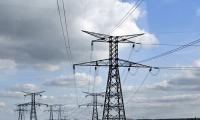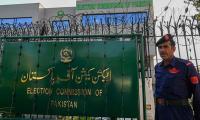LAHORE: The daily economic shocks that the Pakistanis were getting have paled on the resignation/removal of Asad Umar as finance minister, forcing the prime minister to look towards the run of the mill tried stuff available in the market.
The economic downslide during the last nine months was phenomenal and shocking. Never before in Pakistan’s history was a government able to borrow $10 billion in nine months that is more than $1 billion a year.
This economy reacted positively in late 2013 when Saudi Arabia announced a grant of $1.5 billion for the government of Pakistan. The rupee that at one time reached Rs110 against the US dollar rebounded immediately to Rs94 against the greenback and then finally settled at Rs98. This time around the rupee kept depreciating despite regular doses of billions of dollars in last nine month.
Even at that time Pakistan was facing a balance of payment crisis and the foreign exchange reserves were very low. But the then government immediately negotiated a deal with the International Monetary Fund (IMF) under very harsh conditions. The currency rate was not touched.
This made it possible for the government to control inflation even under adverse circumstances. The lower crude oil and global commodity rates did help. The government did not pass on the entire benefit of lower oil prices to the consumers that boosted government revenues. It is unfortunate that the present government could not cash in on the creditability of Imran Khan who managed to bring in over $10 billion in a very short time. The oft repeated mantra that the economy has stabilised is not true.
The foreign exchange reserves are still under severe pressure. They get the boost on borrowed inflows for a while and then started depleting slowly.
This is the reason that foreign exchange reserves of $10.2 billion last week were at the same level ($10.25 billion) as they were nine months back on August 18 2018. The loans of $10 billion have gone down the drain.
After nine months of experimentation, this government has probably recognised that its economic agenda is not workable. It has now gathered the old tested hands to manage the economy. Dr Hafeez Shiekh has served as federal privatisation minister in Musharraf regime, federal and Sindh finance minister during PPP regime.
He knows how the IMF works, though is handicapped by the presence of an inexperienced finance secretary and a former bureaucrat and SBP governor who negotiated with the IMF recently under the leadership of Umar.
The ministries dealing with economic affairs are however flooded with old and experienced hands. Ishrat Hussain is there along with Razzak Dawood both from Musharraf era.
Nadeem Babar is the most experienced power sector expert from the private sector. There is though a flaw, as he is also operating two power units (unless he has liquidated his interests). This may come under conflict of interest.
Asad Umar was working with a handicap of not being able to coordinate with all the economic industries. They have to be on one page if the government wants the economy to move with certainty.
The financial policies impact industrial sector, so there has to be complete harmony between the ministries of Finance and Industry. Ministry of Commerce determines the duty structure on imports and might need concession for investors from the Finance Ministry so both have to work in tandem. The Power and Petroleum Ministries have to closely coordinate with each other to ensure smooth supply of imported and local fuels for power generation.
The Ministry of Power needs to keep the Ministry of Industry in loop on all power management processes. Load shedding has to be scheduled for industries in a way that when there is power shortage they have free gas supplies to produce their own electricity.
The economy would move if all the economic ministries are in close coordination with each other with the main aim of boasting production.
The financial advisor or finance minister could make efforts to boost revenues (without hurting the manufacturing sector). He may arrange loans or create new resources. Actual progress would be made when productivity increases and the manufacturing sector operates with confidence. It will only be possible through combined positive efforts of all economic ministries.
This initiative enables them to earn a dignified livelihood for their families
The event will host more than 700 booths, including leading global and Pakistani tech giants
Gold rates increased by $8 to all-time high rates of $2,371 per ounce in the international market
Strong retail sales prompted economists at Goldman Sachs to boost their gross domestic product
The IMF dictates its terms based on our past performance
Goldman's profit rose 28 percent to $4.13 billion, or $11.58 per share, in the first quarter







